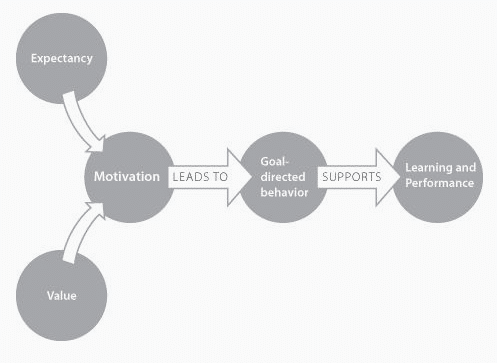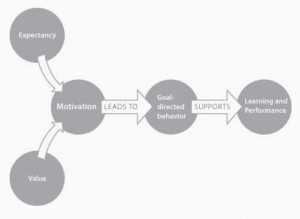In our work as educators, we often find ourselves wrestling with choices about instructional strategies. For example, should we try blended learning, or should we stick with tried-and-true methods of classroom instruction? If we decide to go with blended learning, which model should we use (Station Rotation, Flipped Classroom, Flex, etc.)? Which devices and software tools should we adopt? How should we combine blended learning with other strategies such as project-based learning and mastery-based learning? And with any of these strategies, how do we foster a school or classroom culture that brings out our students’ fullest potential?
Unfortunately, the answers to most of these questions are not clear-cut. For each potential option you can find compelling success stories and disconcerting failures. Getting to clear answers is complicated by the fact that most of these choices have overlapping components, which makes it hard to disentangle the effect of any single strategy. For example, if blended learning doesn’t seem to be working for your students, was it a problem with the software, the teaching, the classroom culture, or a combination of multiple factors? As we try to find clarity in the messy work of picking instructional strategies, it is important to examine the latest research on the effectiveness of the various options. Yet I fear that if we focus too narrowly on evaluating and comparing individual strategies, we can find ourselves oscillating between fads and never really improving learning for our students.
To come to an understanding of which strategies work, we need to step back and look at the set of strategies we’ve chosen through the lens of good theory. As Disrupting Class points out, good theory is a critical tool for moving beyond the inconclusive results of correlative research and coming to understand what causes the effects we want to see. Just as wings and feathers do not cause birds to fly—ostriches and penguins are prime examples—strategies themselves do not cause good student outcomes to occur. Rather, good strategies help create the circumstances that produce good student outcomes. In reality, no single strategy maps perfectly onto all the necessary circumstances for student success. This is why certain strategies seem to work well for some teachers or schools, but fail with others. We need good theory in order to differentiate correctly the circumstances that produce our desired outcomes. Then we can evaluate our chosen set of strategies against these circumstances to understand why they are working or falling short.
The theory of motivation presented in How Learning Works offers one avenue of insight for this type of analysis (see diagram below). Motivation, as it is defined in the theory, is what leads students to put forth effort toward achieving their goals. Students’ goals in this context are not necessarily the goals that we set for them. These goals can be anything that a student might want to accomplish for herself, and they can come from any area of a student’s life. Examples of students’ goals might include getting an “A” on a test, making the soccer team, getting invited to a party, or beating the next level in a video game. In reality, students usually have multiple goals, and these goals often compete with each other for the students’ attention and effort.
A student’s motivation to achieve her goals has two components: subjective value and expectancy. Subjective value represents a goal’s importance to the student, and it can come in different forms. For example, a student may enjoy getting an “A” on a test because of the satisfaction that comes from successfully completing a goal (attainment value), but enjoy working on an art or engineering project because of the innate satisfaction that comes from being creative and solving problems (intrinsic value). Some goals are valuable to students because they serve as a means to an end, such as when a student works to bring home a good report card so that he can get a bump in his allowance (instrumental value, commonly known as extrinsic motivation). In reality, many goals derive value from multiple sources. The more a goal has subjective value, the more a student will be motivated to work toward that goal. When students have competing goals, those with the greatest subjective value will usually get the most attention and effort.
Expectancy is the other important component of motivation. It is a student’s belief that he is capable of successfully achieving a goal. Building students’ knowledge and skills through learning and practice is an important first step for developing expectancy. When students are challenged by goals that are at the fuzzy frontier of their known capabilities, their internal explanations for their past successes and failures have a major influence on their sense of expectancy. For example, when facing a challenging math problem, a student who attributes her past success in math to her own hard work and intelligence will have a much greater expectancy than a student who attributes his past success to the step-by-step help he received from his friend.
Together, expectancy and subjective value are both critical components of motivation. If the goals that we set for our students are not aligned with their internal sources of subjective value, even our most capable students will have boredom written on their faces. On the other hand, even when subjective value is high, if students face goals with a low sense of expectancy they will be similarly unmotivated. Ideally, when high expectancy and subjective value are both present, students seem to learn naturally and their pace of learning gets accelerated.
By analyzing the alignment between our set of strategies and our students’ expectancy and subjective value, we can get a much better sense for how those strategies affect student motivation. Admittedly, this kind of analysis can be inherently challenging. First, students’ expectancy and subjective value are not easily observed or measured. Furthermore, expectancy and subjective value can vary greatly between different students and across different learning goals. Yet despite these challenges, huge benefits come from nailing the components of student motivation.
In an upcoming blog post I will dive into a few real-world examples that show how this theory can be used in practice.



